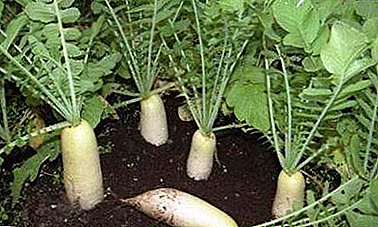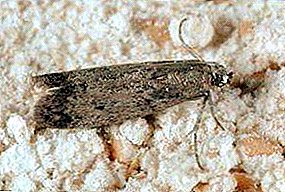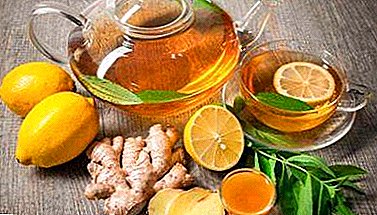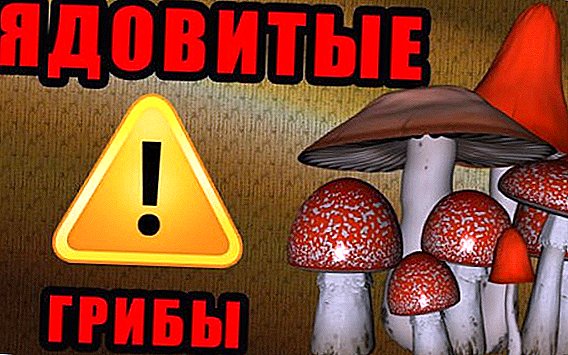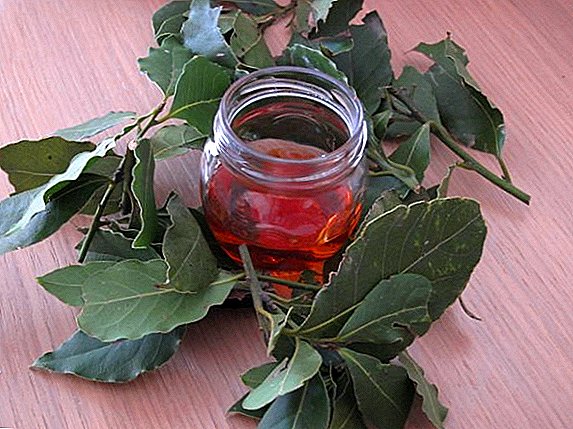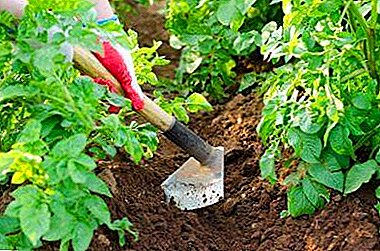 Each country has its own popular breeds of farm animals, which better than others adapt to a particular locality, while differing in high productivity. As the most popular "pet" in this regard was and remains a cow, I would like to tell about her first of all. Let's find out what cows are popular in Belarus, and what they are remarkable for.
Each country has its own popular breeds of farm animals, which better than others adapt to a particular locality, while differing in high productivity. As the most popular "pet" in this regard was and remains a cow, I would like to tell about her first of all. Let's find out what cows are popular in Belarus, and what they are remarkable for.
Consumption of beef and milk cows in Belarus
Cow's milk occupies about 85% of the entire global dairy structure, so it is not surprising that Belarusians willingly produce it. Thus, over the past 7 years, its production in the country has only increased: from 6,500 thousand tons in 2011 to 7,500 thousand tons in 2017. If we proceed from this growth trend, it is likely that by the end of 2018 this figure will increase by another 1-2%, and the Minsk region, especially the Logoisk and Volozhin districts, is traditionally considered the leader of dairy production in the country.
Read about the benefits of cow's milk for the human body.
The export share of milk and dairy products is about 70%, so we can say that a little more than a quarter of the total output remains for domestic consumption, and, apparently, this is quite enough.  As for the country's meat production, here too Belarus is only increasing its pace. So, in 2017, beef production increased by 8% compared to the previous four years, and by 2020 it is planned to export 152 thousand tons of such meat abroad. According to unofficial data, on average, one Belarusian consumes about 100 kg of meat per year, and about half of this value is beef.
As for the country's meat production, here too Belarus is only increasing its pace. So, in 2017, beef production increased by 8% compared to the previous four years, and by 2020 it is planned to export 152 thousand tons of such meat abroad. According to unofficial data, on average, one Belarusian consumes about 100 kg of meat per year, and about half of this value is beef.
Did you know? The name of cow meat ("beef") is derived from the old Russian word "beef", which means "cattle".
What breeds of cows are popular in the Republic
Considering the high popularity of beef in the country, more and more cows are being raised every year on farms at the private and state levels, choosing not only meat but also dairy breeds. The most popular are representatives of the black-motley, red-steppe and Simmental rocks, which are distinguished by rather high rates of productivity.
Black and motley
The breed represents the dairy direction of cows and appeared in the Netherlands in the XVIII-XIX centuries. The progenitors of modern breed representatives are the Dutch and Ostfriz breeds, but because of their low immunity and fragile physique, breeders had to improve the breed in the 20th century, as a result of which their meat value also increased. The increased category of black-spotted cattle became a separate breed only in 1960.  As for their exterior features, it is worth highlighting the following:
As for their exterior features, it is worth highlighting the following:
- head - long, with an elongated muzzle;
- horns - gray, with dark endings;
- neck - average in length, without pronounced muscles, but with folds;
- chest - average width, depth of about 70-75 cm;
- back - flat, with a straight lower back and a wide sacrum;
- legs - smooth and strong, stable;
- stomach - quite voluminous, with a bowl-shaped udder and unevenly developed shares on it.
 The height of the black-and-white cows at the withers is 130-132 cm (slanting body length - 158-162 cm), with a weight of 550-650 kg in females and 900-1000 kg in males. At birth, the weight of calves is usually 37-42 kg.
The height of the black-and-white cows at the withers is 130-132 cm (slanting body length - 158-162 cm), with a weight of 550-650 kg in females and 900-1000 kg in males. At birth, the weight of calves is usually 37-42 kg.
Important!Black-and-white cattle in Belarus makes up 99.8% of the total number of farmed breeds.These cows can boast quite good indicators of productivity, however, they largely depend on the animal nutrition and conditions of detention. On average, you should focus on the following values:
- milk yield per year - 3500-6000 kg;
- milk fat - 3.4-3.6%, with a protein content of 3.1-3.3%;
- meat slaughter - 55-60%;
- early maturity - moderate, and for rapid muscle building requires nutrition with a minimum amount of concentrated supplements.
 It should be noted that in comparison with other dairy cows, the productivity of the representatives of this breed allows them to occupy one of the leading places in the modern market. However, breeding work with animals continues in the country today, so it is likely that in the near future we will be able to talk about higher rates of productivity in all directions.
It should be noted that in comparison with other dairy cows, the productivity of the representatives of this breed allows them to occupy one of the leading places in the modern market. However, breeding work with animals continues in the country today, so it is likely that in the near future we will be able to talk about higher rates of productivity in all directions.
Check out the best dairy and beef cattle breeds in Russia.
Red steppe
Another widespread in Belarus breed of dairy cows. Despite the fact that they are much less common than the previous ones in the country, this does not make them less noticeable. The history of the appearance of the breed goes back to the XVIII century, and its ancestors are the bulls of angelic breed and ordinary steppe cows. Over the next decades, breeding work to improve the qualities of new animals did not stop, and more recently scientists tried to improve the quality of dairy and meat products by crossing an existing red steppe with representatives of the red Danish breed.  The exterior of modern animals has the following characteristics:
The exterior of modern animals has the following characteristics:
- head - medium, with a slightly elongated muzzle and medium horns;
- neck - thin, with many folds and raised withers;
- chest - deep, but not very wide, dewlap weakly developed;
- back - flat, the back part is wide;
- legs - smooth and strong;
- stomach - large, but does not look drooping;
- udder - medium in size, rounded (sometimes there are cows with udder of irregular shape);
- suit - red, with varying intensity and white markings.
 In the withers, the height of the cows of this breed does not exceed 136-129 cm (slanting body length - 155-160 cm), with a weight of males 800-900 kg and females within 550-600 kg. Newborn individuals differ in weight of 30 kg, but closer to six months of age they can reach 185 kg.
In the withers, the height of the cows of this breed does not exceed 136-129 cm (slanting body length - 155-160 cm), with a weight of males 800-900 kg and females within 550-600 kg. Newborn individuals differ in weight of 30 kg, but closer to six months of age they can reach 185 kg.
Did you know? The tallest cow listed in the Guinness Book of Records is the cow of Blos, who lived in Illinois and died in 2015 after a leg injury. Her height was 190 cm, and there is still no official data that this record was broken.Discussing the red steppe cow, one cannot help but pay attention to the indicators of its productivity, for which, in fact, such animals are valued. The average values in this case look like this:
- milk yield per year - 3500-4500 kg;
- milk fat - 3.7-3.9%, with a protein content of 3.2-3.5%;
- meat slaughter - 54-56% (muscles are poorly developed both in cows and in bulls);
- weight gain - On average, with intensive fattening, 900 g per day.
 Despite the relatively low rates of meat output, the red steppe cow is quite in demand not only in Belarus, but also in neighboring Russia, which is largely due to its high adaptive capabilities and ability to adapt to almost any climatic conditions.
Despite the relatively low rates of meat output, the red steppe cow is quite in demand not only in Belarus, but also in neighboring Russia, which is largely due to its high adaptive capabilities and ability to adapt to almost any climatic conditions.
Read more about the features of breeding red steppe breed of cows.
Simmental
The oldest of all the species represented. Researchers still do not have a common opinion about the origin of these meat and dairy animals, and the only thing that they agree on is in the country of origin - Switzerland. According to one point of view, among the ancestors of modern Simmental cows (the second name is Bern) there are wild tours crossed with Helvet cows, and based on the second, Scandinavian cows brought to the Swiss lands in the fifth century were progenitors of the breed. Outwardly, these are noticeable and attractive cows, which stand out from the rest with their exterior features:
Outwardly, these are noticeable and attractive cows, which stand out from the rest with their exterior features:
- head - coarse, large, with a large forehead and light pink nose and eyelids;
- light horns - relatively small, mostly sticking to the side;
- neck - short and muscular, smoothly passing into the chest;
- chest - deep, the bulls have a clearly visible demoment;
- back - flat, smoothly turning into the long loin and the sacrum (the croup is rather wide);
- legs - Straight, correctly set, with pink hooves at the bottom;
- stomach - white, slightly sags, but stands out on the sides, the udder is rounded;
- suit - cream or cream-motley, although white-headed red or red-and-white animals are often found.
Important! Among the representatives of the breed sometimes there are individuals with hind legs, arranged like elephants. This feature is considered to be a breed defect and prohibits the use of an animal for breeding.The weight of an adult cow ranges from 550 to 900 kg, while the bulls reach values of 850-1300 kg. At the same time, the weight of newborn calves often exceeds 45 kg, which is why the first birth often takes place with complications. The height at the withers of an adult cow varies between 145-155 cm with a body length of 160 cm.
 As for the productive qualities of Simmental cows, Belarusians value them for the following indicators:
As for the productive qualities of Simmental cows, Belarusians value them for the following indicators:- milk yield per year - 3500-5000 kg and more;
- milk fat - 3.8-4.0%, with a protein content of up to 4-5%;
- meat slaughter - 55-65%;
- meat quality - high, distinguished by its high calorie content;
- early maturity - moderate weight gain of young stock 850-1100 g per day;
- high probability of birth of twin calves.
Learn how to care and how to feed the Simmental cow breed.
Simmental cows are strong and durable animals, but this does not mean that it is possible to care for them worse than for the other described breeds. Any of them will be distinguished by high productivity only in the case of good conditions and good nutrition, and if we take into account the export figures of Belarusian beef and milk, the farmers of the country know this for sure.



